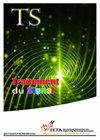使用改进的YOLOv7方法增强校园安全目标检测
IF 1.2
4区 计算机科学
Q4 COMPUTER SCIENCE, ARTIFICIAL INTELLIGENCE
引用次数: 0
摘要
本文章由计算机程序翻译,如有差异,请以英文原文为准。
Enhanced Campus Security Target Detection Using a Refined YOLOv7 Approach
In many educational institutions, safety management traditionally depends upon manual video surveillance, leading to potential delays in the identification and alerting of perilous activities, notably the possession of controlled knives and smoking behaviors exhibited by students. These activities possess significant consequences for both the psychological and physical well-being of students. Recognizing this pressing need, an augmented object detection method for campus security, rooted in YOLOv7, is presented. The EIoU (Efficient Intersection over Union) loss function has been substituted to expedite model convergence and heighten detection fidelity. Additionally, the integration of the CBAM (Convolutional Block Attention Module) attention mechanism with the DCNv2 (Deformable ConvNets v2) deformable convolutional kernel not only mitigates the challenge of information inundation but also enhances feature extraction capabilities, facilitating adjustments to geometric deformations. Experimental findings indicate that this proposed method achieves a detection accuracy of 92.6% across various categories on a dataset comprising three categories, spanning a total of 4500 images, and attains an mAP of 96.4%. In comparison to the conventional YOLOv7 algorithm, enhancements in detection accuracy and mAP by 6.9% and 6.6%, respectively, have been observed, affirming the efficacy of the presented algorithm.
求助全文
通过发布文献求助,成功后即可免费获取论文全文。
去求助
来源期刊

Traitement Du Signal
工程技术-工程:电子与电气
自引率
21.10%
发文量
162
审稿时长
>12 weeks
期刊介绍:
The TS provides rapid dissemination of original research in the field of signal processing, imaging and visioning. Since its founding in 1984, the journal has published articles that present original research results of a fundamental, methodological or applied nature. The editorial board welcomes articles on the latest and most promising results of academic research, including both theoretical results and case studies.
The TS welcomes original research papers, technical notes and review articles on various disciplines, including but not limited to:
Signal processing
Imaging
Visioning
Control
Filtering
Compression
Data transmission
Noise reduction
Deconvolution
Prediction
Identification
Classification.
 求助内容:
求助内容: 应助结果提醒方式:
应助结果提醒方式:


